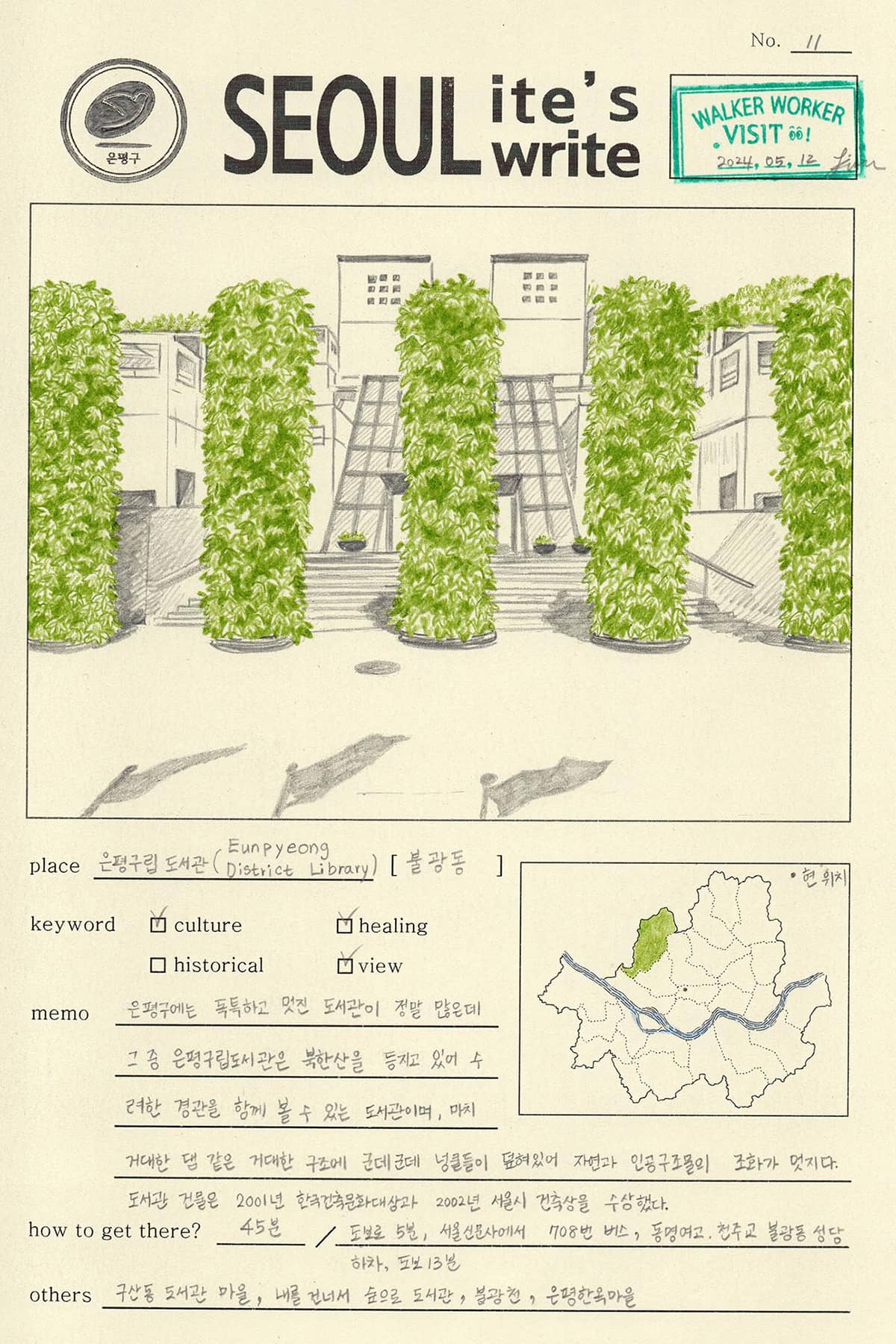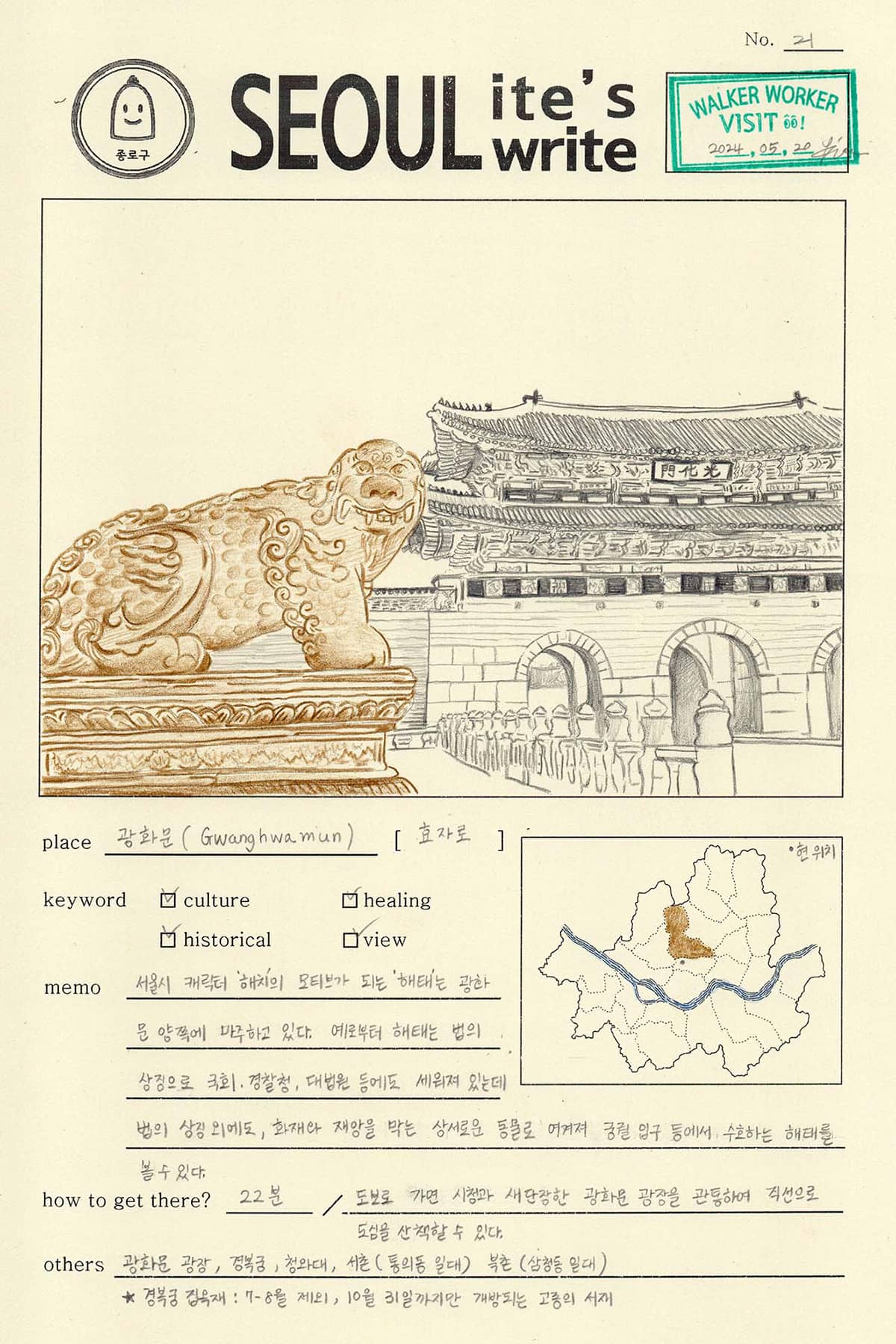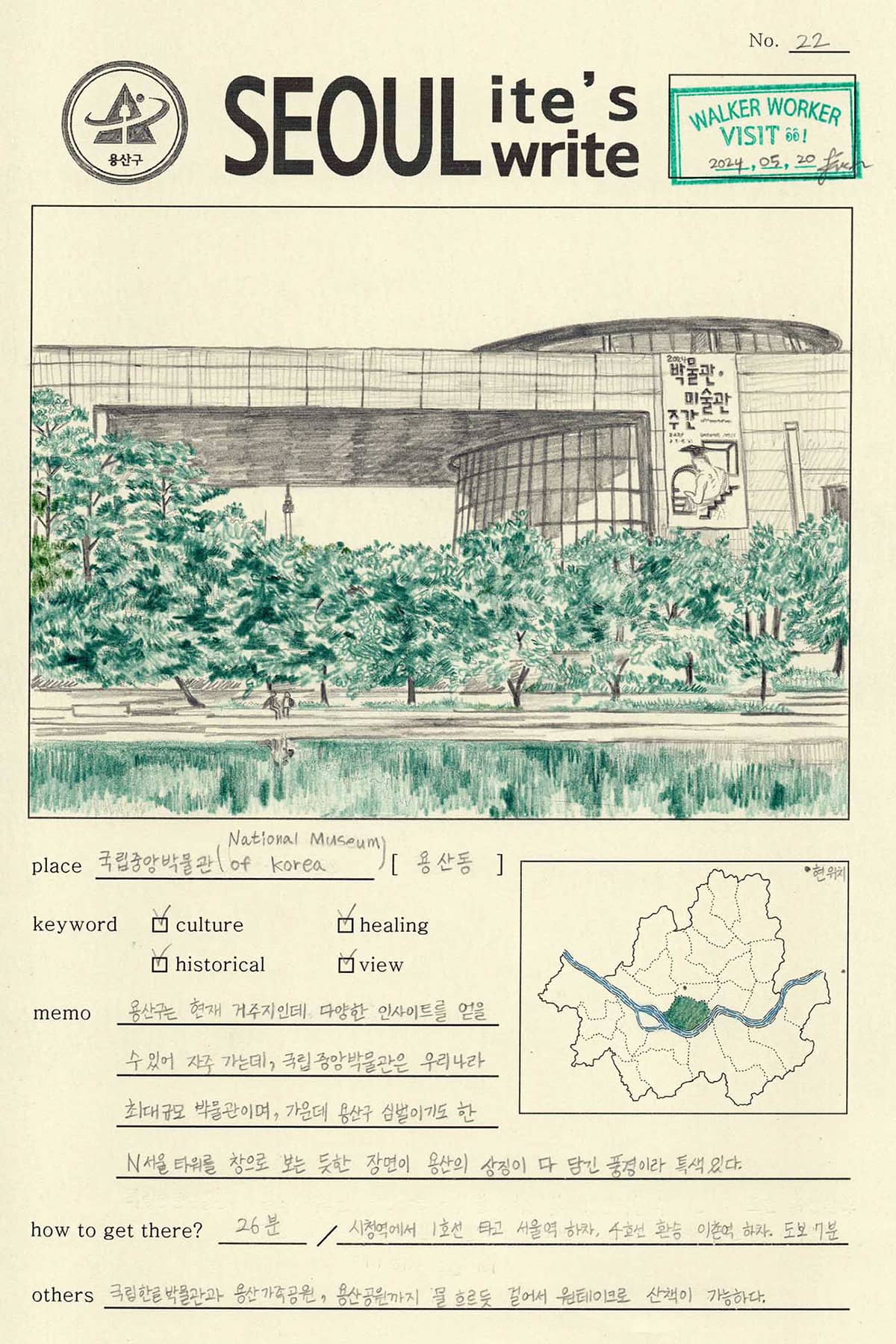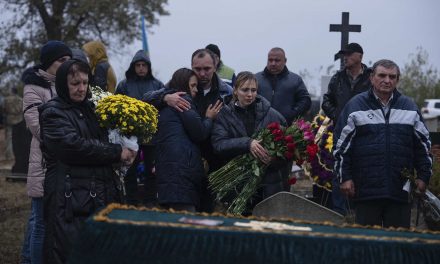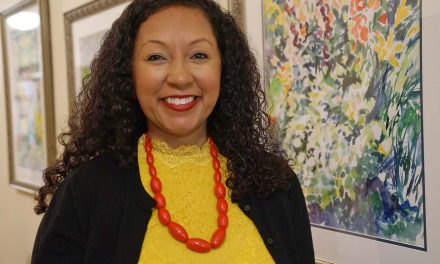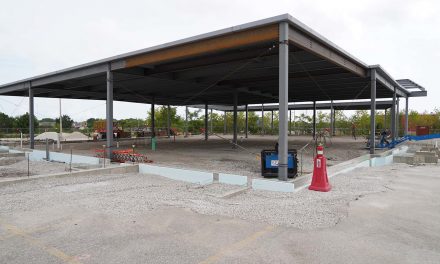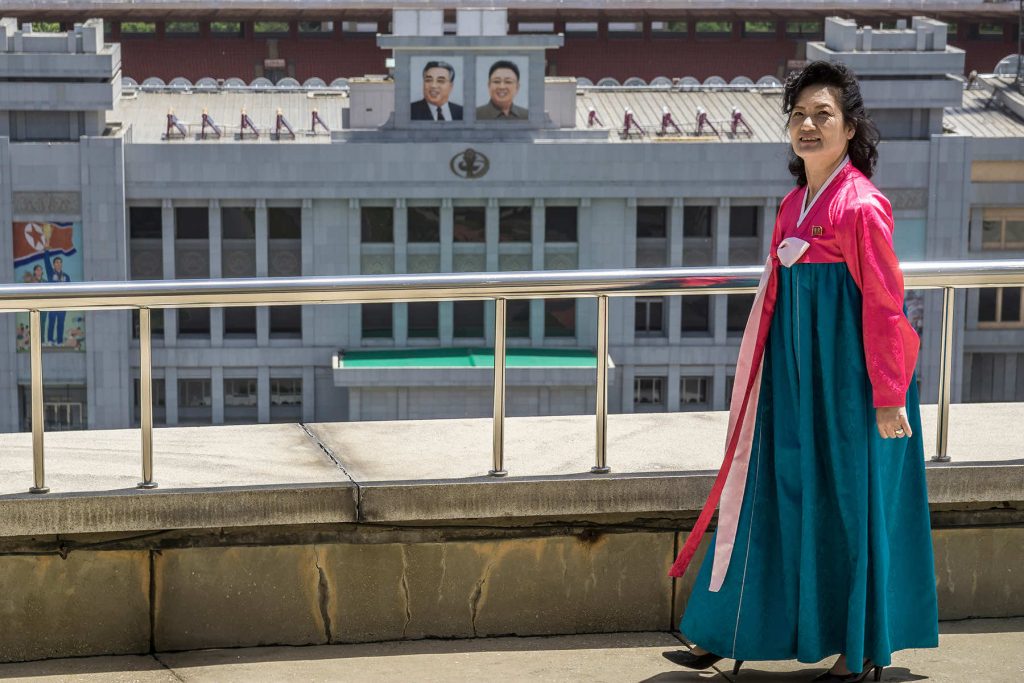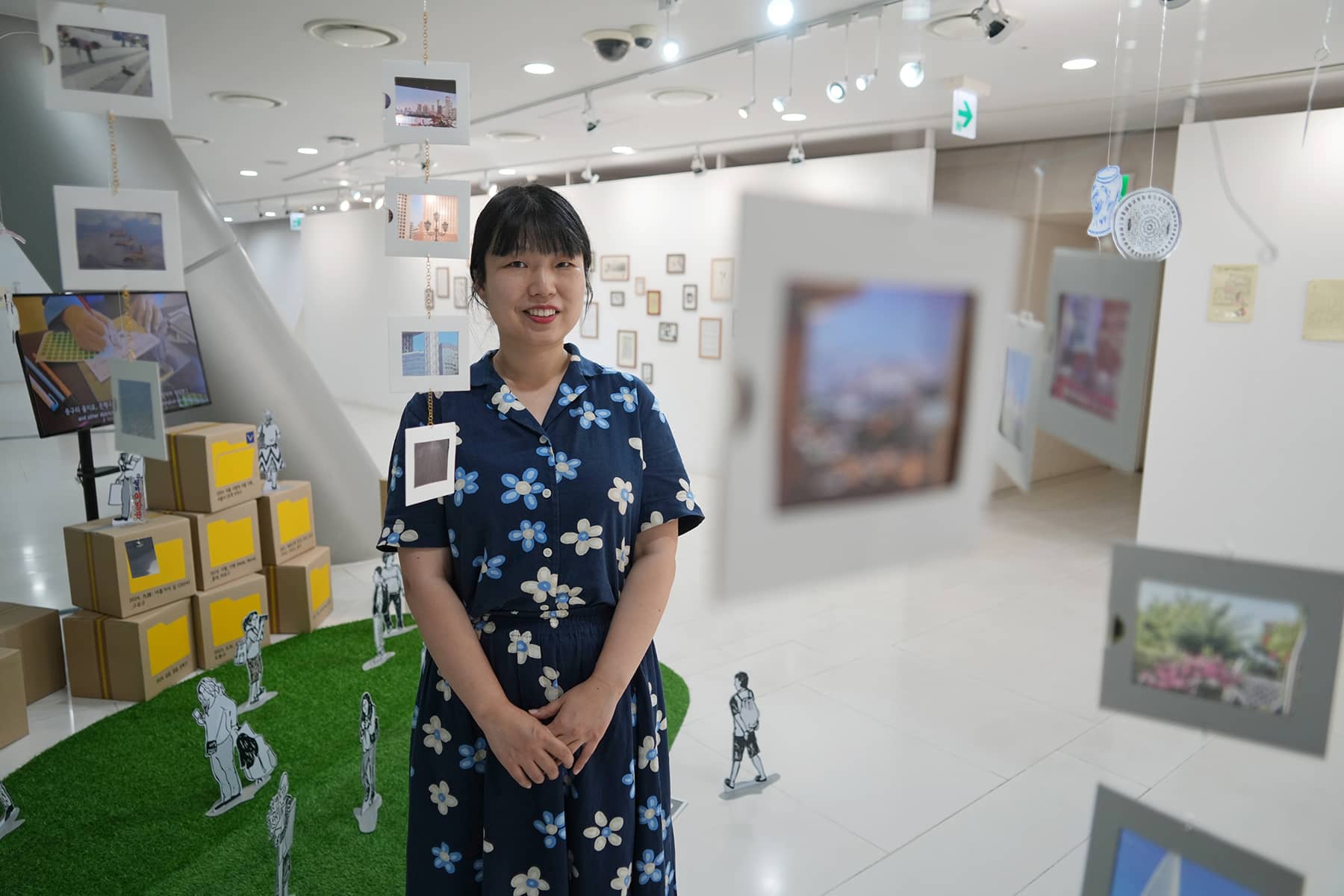
Seoul, the sprawling capital of South Korea, is a city known for its fascinating blend of ancient traditions and modern technology. Within the dynamic metropolis, one artist made it her mission to explore every corner of the city and document its ever-evolving landscapes.
Jinseon Kim, a Seoul native, spent over a decade traversing Seoul’s 25 districts, capturing its unique charm and spirit through a range of artistic media, including drawings, photographs, written reports, and objects.
During an exclusive interview with Milwaukee Independent at Seoul’s City Hall, Kim shared her personal journey as an artist, her deep connection to Seoul, and the significance of her work in documenting the city’s past and present.
Kim’s July to September exhibition, titled “Seoul Records by a Seoulite,” showcased the culmination of her explorations, and invited the public to experience the diverse allure of the city through her eyes.
Born and raised in Seoul, Kim had always been drawn to the city’s multifaceted nature. For her, Seoul was more than just a place to live. It was a never-ending source of inspiration. What began as a personal project of wandering the city streets evolved into a significant artistic endeavor, with Kim becoming a self-proclaimed “Seoul vagabond” and later a “Seoul guide.”
“Seoul is a massive city featuring Namsan Mountain and the Han River, and it’s divided into 25 districts. Despite its size, one of its greatest advantages is how easy it is to travel around without a car, thanks to its efficient public transportation system,” said Kim. “Starting in January of this year, Seoul introduced the ‘Climate Companion’ card, which allows unlimited use of public transportation for just $47.00 per month.”
Since the introduction of the new transportation card, Kim has been able to explore a wider range of places in Seoul. In addition to the monthly pass, there are also 3-day, 5-day, and 7-day options available. Kim said the card has also seen a high demand in regular usage by foreigners.
A graduate of the College of Fine Art and Design at the Incheon Catholic University, Kim’s artistic journey began in 2013 when she started documenting her explorations of Seoul’s bustling streets. Iconic areas included locations like City Hall, Gwanghwamun, Myeongdong, Hongdae, and Gangnam Station. Over the years, her work expanded to cover the entire circular route of Subway Line 2, as well as all 25 districts of Seoul.
“I wanted to share the joy I experienced discovering interesting places in Seoul while freely exploring the city with that transportation card,” said Kim. “So, I organized the information and created a template with illustrations. One of the key points is showing how to get from your current location at City Hall to the place depicted in the illustration using this transportation card.”
Kim said it was her hope that the art exhibition would inspire more people to take an interest in Seoul and come to visit, while also giving them the tools to discover what the nation’s capital had to offer.
“I want to be both a creator and a guide to the diverse charms of Seoul, not only for locals and Koreans from other regions but also for foreign visitors to the city,” said Kim. “Visitors to the exhibition have often said that seeing my artwork makes them want to explore more of Seoul. They also asked how long it would take to visit the places depicted in my work. Many express their gratitude, saying that my art has inspired their travels. I’m thrilled to have achieved my goal of reaching them.”
Kim said she loved Seoul and was always looking for ways to promote it internationally. It was her hope that Milwaukee and Wisconsin would experience her drawings, photos, and writings. And that those records of her love and passion for the city would spread interest and curiosity about Seoul.
At the heart of her artistic work has been her dedication to documenting the city in its most ordinary yet captivating moments. For Kim, art was more than just a creative expression, it was a way of recording history.
“For me, art serves as a tool for recording. The world is continually advancing, with old and modern elements coexisting. However, as things change rapidly, there are many aspects we might feel and discover but miss out on,” said Kim. “I aim to capture those moments.”
In the early days of the project, Kim enjoyed just experiencing the present. However, she realized over time how important it was to capture those moments through her artwork. As the present evolved and changed over time, it became a part of the past.
“Isn’t it wonderful that a personal record can become part of history? I don’t think of my work as recording the grand history of the moment. I simply keep observing and documenting steadily,” said Kim. “It’s time itself that gives my small efforts a place in history.”
As an artist and as a Korean, Kim has been focused on the place where she lives, recording the beauty, charm, and heritage of Korea. While Seoul is her main focus, she also has a great interest in Incheon and Busan.
“This work has given me the confidence to record and create art wherever I go. Beyond Seoul, in any part of Korea, and even outside of Korea, I will observe and document through my own perspective,” said Kim. “I look forward to the day when I can visit Milwaukee and record it through my art.”
Kim’s exhibit artwork was filled with depictions of Seoul’s everyday scenes — its streets, people, and objects — which, over time, transformed into invaluable records of the city’s evolution. She emphasized the importance of recording even the most mundane aspects of life, as those moments often held the key to understanding the deeper cultural and social shifts occurring within a city.
“Looking at the changing cityscape can sometimes make it feel as if the past has disappeared, but the landscapes and records of the past remain intact in my work,” said Kim. “This personal, seemingly small record of the present becomes a historical document over time, reinforcing my resolve to explore and document the city more deeply.”
One of her most notable projects, “Board Game on Subway Line 2,” (2013, 2016, 2018) involved riding Seoul’s iconic circular subway line and getting off at each station to complete a self-imposed mission. The project marked the beginning of her deep dive into Seoul’s neighborhoods, and it remained a significant part of her artistic process.
Another major exhibition included “Walk Work Hongdae (2019),” selected for honors by KB Kookmin Bank’s Artist Program. Such recognition highlighted the public awareness of Kim’s artistic efforts. They were not just about visual representation, but about capturing the spirit of every environment she encountered and then sharing it with others.
“The scenes and elements I collect while walking around become inspiration for my work. As I engage in this daily recording activity, even familiar places and scenes feel like a new and enjoyable journey,” Kim added. “At the beginning of my exhibit ‘Seoul Records by a Seoulite’ is a piece called ‘On the Street,’ which started with the idea that every encounter with one of the countless people on the streets was a special meeting. Initially, it was just a record of scenes collected wherever my steps led. But it later evolved into collecting information from specific viewpoints and locations, becoming a form of cultural documentation.”
EUNPYEONG PUBLIC LIBRARY:
“There are many unique and wonderful libraries in Eunpyeong-gu. Among them, Eunpyeong-gu Public Library is a library with a beautiful view as it is located with Bukhansan Mountain at its back. It is a huge structure like a huge dam, and there are overflows here and there, so the harmony between nature and artificial structures is wonderful. The library building won the 2001 Korea Architecture Culture Award and the 2002 Seoul Architecture Award.”
– Jinseon Kim
GWANGHWAMUN:
“The motif of Seoul City’s character Haechi, ‘Haetae’, faces both sides of Gwanghwamun. Haetae has been a symbol of law since ancient times, and has been erected in the National Assembly, the National Police Agency, and the Supreme Court. In addition to being a symbol of law, it is considered an auspicious animal that prevents fire and disaster, and you can see Haetae guarding the entrance to palaces, etc.”
– Jinseon Kim
NATIONAL MUSEUM OF KOREA:
“Yongsan-gu is where I currently live, and I often go there because I can get various insights. The National Museum of Korea is the largest museum in Korea, and the scene where you can see the N Seoul Tower, which is also the symbol of Yongsan-gu, through the window is a unique scenery that draws all the symbols of Yongsan.”
– Jinseon Kim
- Exploring Korea: Stories from Milwaukee to the DMZ and across a divided peninsula
- A pawn of history: How the Great Power struggle to control Korea set the stage for its civil war
- Names for Korea: The evolution of English words used for its identity from Gojoseon to Daehan Minguk
- SeonJoo So Oh: Living her dream of creating a "folded paper" bridge between Milwaukee and Korean culture
- A Cultural Bridge: Why Milwaukee needs to invest in a Museum that celebrates Korean art and history
- Korean diplomat joins Milwaukee's Korean American community in celebration of 79th Liberation Day
- John T. Chisholm: Standing guard along the volatile Korean DMZ at the end of the Cold War
- Most Dangerous Game: The golf course where U.S. soldiers play surrounded by North Korean snipers
- Triumph and Tragedy: How the 1988 Seoul Olympics became a battleground for Cold War politics
- Dan Odya: The challenges of serving at the Korean Demilitarized Zone during the Vietnam War
- The Korean Demilitarized Zone: A border between peace and war that also cuts across hearts and history
- The Korean DMZ Conflict: A forgotten "Second Chapter" of America's "Forgotten War"
- Dick Cavalco: A life shaped by service but also silence for 65 years about the Korean War
- Overshadowed by conflict: Why the Korean War still struggles for recognition and remembrance
- Wisconsin's Korean War Memorial stands as a timeless tribute to a generation of "forgotten" veterans
- Glenn Dohrmann: The extraordinary journey from an orphaned farm boy to a highly decorated hero
- The fight for Hill 266: Glenn Dohrmann recalls one of the Korean War's most fierce battles
- Frozen in time: Rare photos from a side of the Korean War that most families in Milwaukee never saw
- Jessica Boling: The emotional journey from an American adoption to reclaiming her Korean identity
- A deportation story: When South Korea was forced to confront its adoption industry's history of abuse
- South Korea faces severe population decline amid growing burdens on marriage and parenthood
- Emma Daisy Gertel: Why finding comfort with the "in-between space" as a Korean adoptee is a superpower
- The Soul of Seoul: A photographic look at the dynamic streets and urban layers of a megacity
- The Creation of Hangul: A linguistic masterpiece designed by King Sejong to increase Korean literacy
- Rick Wood: Veteran Milwaukee photojournalist reflects on his rare trip to reclusive North Korea
- Dynastic Rule: Personality cult of Kim Jong Un expands as North Koreans wear his pins to show total loyalty
- South Korea formalizes nuclear deterrent strategy with U.S. as North Korea aims to boost atomic arsenal
- Tea with Jin: A rare conversation with a North Korean defector living a happier life in Seoul
- Journalism and Statecraft: Why it is complicated for foreign press to interview a North Korean defector
- Inside North Korea’s Isolation: A decade of images show rare views of life around Pyongyang
- Karyn Althoff Roelke: How Honor Flights remind Korean War veterans that they are not forgotten
- Letters from North Korea: How Milwaukee County Historical Society preserves stories from war veterans
- A Cold War Secret: Graves discovered of Russian pilots who flew MiG jets for North Korea during Korean War
- Heechang Kang: How a Korean American pastor balances tradition and integration at church
- Faith and Heritage: A Pew Research Center's perspective on Korean American Christians in Milwaukee
- Landmark legal verdict by South Korea's top court opens the door to some rights for same-sex couples
- Kenny Yoo: How the adversities of dyslexia and the war in Afghanistan fueled his success as a photojournalist
- Walking between two worlds: The complex dynamics of code-switching among Korean Americans
- A look back at Kamala Harris in South Korea as U.S. looks ahead to more provocations by North Korea
- Jason S. Yi: Feeling at peace with the duality of being both an American and a Korean in Milwaukee
- The Zainichi experience: Second season of “Pachinko” examines the hardships of ethnic Koreans in Japan
- Shadows of History: South Korea's lingering struggle for justice over "Comfort Women"
- Christopher Michael Doll: An unexpected life in South Korea and its cross-cultural intersections
- Korea in 1895: How UW-Milwaukee's AGSL protects the historic treasures of Kim Jeong-ho and George C. Foulk
- "Ink. Brush. Paper." Exhibit: Korean Sumukhwa art highlights women’s empowerment in Milwaukee
- Christopher Wing: The cultural bonds between Milwaukee and Changwon built by brewing beer
- Halloween Crowd Crush: A solemn remembrance of the Itaewon tragedy after two years of mourning
- Forgotten Victims: How panic and paranoia led to a massacre of refugees at the No Gun Ri Bridge
- Kyoung Ae Cho: How embracing Korean heritage and uniting cultures started with her own name
- Complexities of Identity: When being from North Korea does not mean being North Korean
- A fragile peace: Tensions simmer at DMZ as North Korean soldiers cross into the South multiple times
- Byung-Il Choi: A lifelong dedication to medicine began with the kindness of U.S. soldiers to a child of war
- Restoring Harmony: South Korea's long search to reclaim its identity from Japanese occupation
- Sado gold mine gains UNESCO status after Tokyo pledges to exhibit WWII trauma of Korean laborers
- The Heartbeat of K-Pop: How Tina Melk's passion for Korean music inspired a utopia for others to share
- K-pop Revolution: The Korean cultural phenomenon that captivated a growing audience in Milwaukee
- Artifacts from BTS and LE SSERAFIM featured at Grammy Museum exhibit put K-pop fashion in the spotlight
- Hyunjoo Han: The unconventional path from a Korean village to Milwaukee’s multicultural landscape
- The Battle of Restraint: How nuclear weapons almost redefined warfare on the Korean peninsula
- Rejection of peace: Why North Korea's increasing hostility to the South was inevitable
- WonWoo Chung: Navigating life, faith, and identity between cultures in Milwaukee and Seoul
- Korean Landmarks: A visual tour of heritage sites from the Silla and Joseon Dynasties
- South Korea’s Digital Nomad Visa offers a global gateway for Milwaukee’s young professionals
- Forgotten Gando: Why the autonomous Korean territory within China remains a footnote in history
- A game of maps: How China prepared to steal Korean history to prevent reunification
- From Taiwan to Korea: When Mao Zedong shifted China’s priority amid Soviet and American pressures
- Hoyoon Min: Putting his future on hold in Milwaukee to serve in his homeland's military
- A long journey home: Robert P. Raess laid to rest in Wisconsin after being MIA in Korean War for 70 years
- Existential threats: A cost of living in Seoul comes with being in range of North Korea's artillery
- Jinseon Kim: A Seoulite's creative adventure recording the city’s legacy and allure through art
- A subway journey: Exploring Euljiro in illustrations and by foot on Line 2 with artist Jinseon Kim
- Seoul Searching: Revisiting the first film to explore the experiences of Korean adoptees and diaspora






































